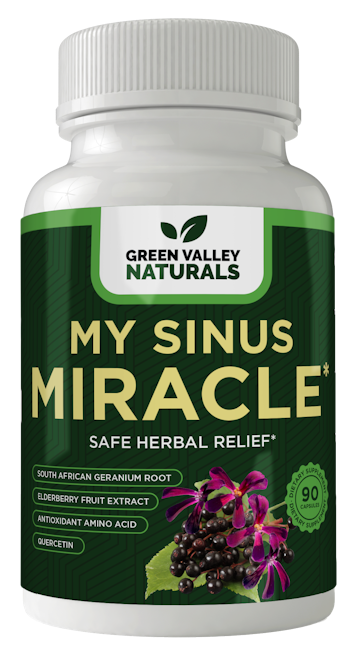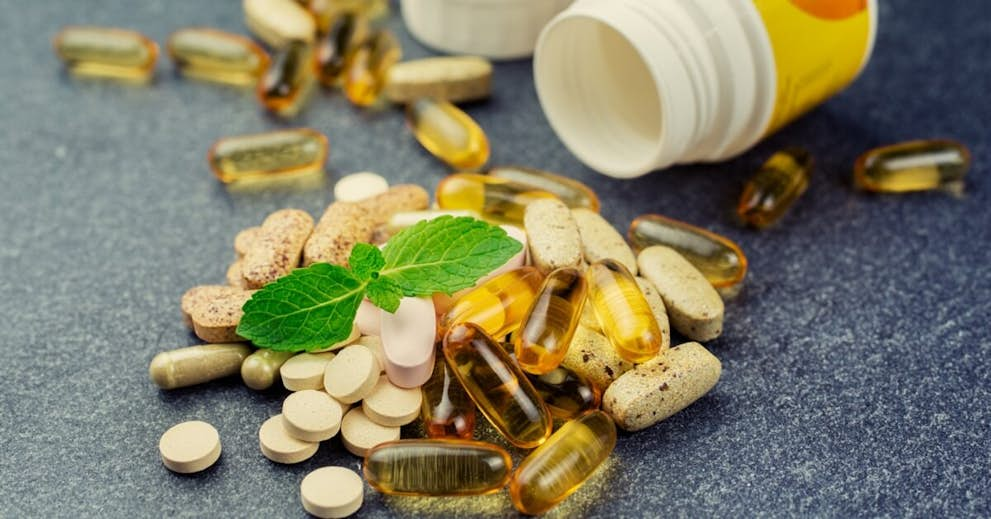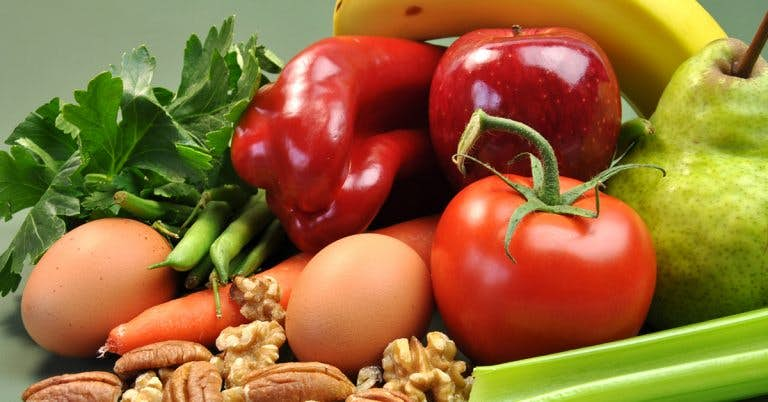
Whether you must avoid cow milk or simply choose to, the market featuring milk alternatives is becoming more crowded every year. Since these milk alternatives claim a variety of health benefits it’s hard to figure out which is best for you. Let’s take a closer look at what the science says…
Where money, health, and marketing are concerned, things can get messy, which is exactly what’s going on in the milk industry right now. The dairy industry is miffed – and has been for a long time – about the slew of recently invented beverages on the market that call themselves “milk”.
They’ve even taken their argument to the FDA, asserting that all plant-based milks have no right to call themselves “milk” and should be called “imitation milk.” The FDA has not supported this claim, asserting that something like “soy” or “rice” in front of the word “milk” is enough to demonstrate to reasonable shoppers that the product is, in fact, not cow milk.1
And there certainly are a lot of these milk alternatives, including soy, pea, almond, cashew, potato, oat, hemp, peanut, lactose-free, coconut, rice, flax, pistachio, banana, "plant," hazelnut, and quinoa milk. And I’m by no means sure that long list is complete.
That outrage from the dairy industry, of course, stems most likely from money. It’s a simple fact that sales of these alternative milks are outpacing sales of regular milk. And as dairy sales go down, plant-based milk sales are shooting up.
According to a USDA report, in 2017 dairy milk sales dropped by 12 percent while plant-based milk sales went up by 36 percent.2 That’s not great news for dairy farmers, but for anyone who is lactose-free, vegan, or has a milk allergy, it’s a win.
So, here’s my take on the many milk products available, in no particular order.
Ten alternative milks: Pros and cons
1. Almond milk: The majority of almond milk brands contain between 35 and 90 calories per cup, and you can get sweetened or unsweetened (I’d veer toward the latter). Ideally, almond milk is made only from almonds and water, though you may find some that are fortified with extra nutrients. You’ll get a gram of protein and fiber per serving in the lower-calorie versions.3 Just keep in mind that you should supplement with nut butter or some other high protein food if you’re replacing dairy with almond milk. Almond milk is currently the leader in alternative milk market sales.4
2. Soy milk: Unsweetened soy milk clocks in at 80 calories per cup and has about eight grams of plant-based protein from soybeans. Soy milk also offers quite a bit of fiber and antioxidants, plus polyunsaturated fats. There has been concern about cancer because soy contains compounds that are similar to the hormone estrogen. Some past studies have pointed to a connection between soy and cancer, particularly prostate and breast cancers, meanwhile other studies praise certain soy extracts for cancer-fighting benefits. The latest research shows that soy may actually be protective against cancer. In fact, dietary soy is associated with lower breast cancer risk.5
3. Coconut milk: Made from coconut cream (the fatty part of the coconut) and water, this one is higher in fat and lower in carbohydrates than the other nut or grain-based milks. It also has a bit of a tropical taste, plus around four grams of saturated fat per cup. But that’s not entirely a bad thing, because the fat boosts satiety and may help curb your appetite if you’re looking to lose weight.6
4. Oat milk: This milk is on its way to becoming the most popular at present, thanks to its creamy texture, light flavoring, and higher fiber content when compared to other alternative milks. Oat milk has a few more calories than unsweetened almond milk and is lower in protein than non-fat cow’s milk or soy milk.7 Some brands of oat milk do have a good amount of sugar, more than, say, unsweetened almond milk.
5. Pea milk: This is one of the newer, more nutrient-dense plant-based milk blends. It’s made from pea protein isolate, water, and sunflower oil, guar, and gellan gums that act as emulsifiers. It also contains algal oil (made from marine algae), which adds key omega-3 fatty acid DHA to help with immunity and heart health. If you get the unsweetened version, it offers as much as eight grams of protein.8
6. Cashew milk: Made the same way as almond milk through soaking and blending the nut with water, then straining, cashew milk offers about 40 to 50 calories per cup and has several immune-boosting nutrients including zinc, copper, and magnesium. It also has a distinct taste all its own, which some love and some don’t.9
7. Peanut milk: This milk is harder to find in stores but easy to make yourself (you can find loads of recipes online). If you do try it, you’ll notice it’s similar in taste and nutrient profile to almond milk and cashew milk, including a high protein content. However, it has the added quality of being better for the planet, since peanuts grow underground and don’t need a ton of water.10 If you do try to make a batch, I’d recommend choosing organic peanuts.
8. Flax milk: Mostly made from flaxseed oil, pea protein, and water, most flax milk varieties are similar in nutrient profile to pea milk. This milk clocks in at about 70 calories per cup and includes alpha-linolenic acid that helps boost immunity and reduces heart risk.11
9. Hemp milk: This milk is a blend of hulled hemp seeds and water and is packed with vitamin D, magnesium, and calcium (though this varies depending on fortification). Hemp milk also includes both omega-3 and omega-6 fatty acids. The only downside is that this milk offers very little fiber, and the extra-nutty flavor is considered bitter to some.12
10. Banana milk: This nut-free option has its own sweetness, which includes four grams worth of natural sugar per cup. It’s creamy and great in smoothies, and has 60 to 150 calories, three grams of fat, and 15 milligrams of sodium, along with some fiber and protein.13
Other alternative milks I won’t get into here include pecan milk (high in sugar and calories with a sweet taste), hazelnut milk (low in calories but higher in sodium with a nutty taste), pistachio milk (creamy, higher in calories but also in protein), and macadamia nut milk (extra creamy, not too high in calories).14
More to Consider than Nutrients…
Beyond the nutritional profile of each individual type of milk, there are a few other things to keep in mind. For starters, milks are fortified in different ways. And because all people have different nutritional needs, you have to consider what’s right for you.
For example, you might be more concerned with a product’s omega-3 fatty acid profile, perhaps because you’re a vegetarian, so you’d look for something fortified with those over calcium and vitamin D.
In terms of other benchmarks, I recommend milks with as few ingredients as possible and as little added sugar as possible. It’s ideal to have between seven to eight grams of protein per serving and less than 140 mg of sodium per cup.
The main thing to watch out for, if you give up dairy milk completely, is to make sure you’re getting enough protein from other sources.
Finally, dairy in general has a higher environmental impact than all of the alternative milks, producing more greenhouse gasses and using more water. In fact, manufacturing dairy milk takes nine times more land to make a glass than almond, oat, rice or soy require.15
More important, dairy milk has recently been linked to increased incidents of breast cancer, according to a 2020 study from the International Journal of Epidemiology.
The study, which followed over 52,000 women for nearly eight years, found no obvious connection between soy intake and breast cancer risk, but did show dairy milk is connected to elevated incidents of breast cancer.16 I think it’s possible the increased cancer risk is due to cows that have been fed hormones and antibiotics, rather than to anything inherent to milk.
I’m of the mind that, for most people, dairy products—whether milk or cheese—are a special treat and not something to indulge in every day. That being said, fermented dairy products such as yogurt are healthy for pretty much everyone. The research suggests that the healthy bacteria supplied by the fermentation process counteracts any negative effects from dairy products.
Readers often ask what I do myself, so I’ll tell you: I consume milk products – always, always organic, including raw milk from a local farmer (meaning it has not been pasteurized or homogenized). Several times in my life I abstained from milk products altogether, adding up to years without milk, and saw no health benefits, so I’m confident I don’t have lactose intolerance or milk allergies.
People of European descent usually don’t have these problems; they’re much more common among Asians. European culture has involved heavy milk consumption for millennia, and more likely than not the people genetically adjusted to it. For people from other continents milk is a “foreign food” to which they may be allergic.
- https://foodinstitute.com/focus/plant-based-milk-wins-court-battle-in-labeling-war-2/
- https://thebeet.com/dairy-free-milk-sales-are-leading-to-the-decline-of-dairy-according-to-the-usda/
- https://www.goodhousekeeping.com/health/diet-nutrition/g27128821/best-milk-alternative-substitutes/
- https://www.cnbc.com/2019/11/13/5-charts-that-show-how-milk-sales-have-changed.html
- https://thebeet.com/dairy-milk-is-linked-to-increased-incidents-of-breast-cancer-new-study-finds/
- https://www.goodhousekeeping.com/health/diet-nutrition/g27128821/best-milk-alternative-substitutes/
- https://www.goodhousekeeping.com/health/diet-nutrition/g27128821/best-milk-alternative-substitutes/
- https://www.goodhousekeeping.com/health/diet-nutrition/g27128821/best-milk-alternative-substitutes/
- https://www.goodhousekeeping.com/health/diet-nutrition/g27128821/best-milk-alternative-substitutes/
- https://www.goodhousekeeping.com/health/diet-nutrition/g27128821/best-milk-alternative-substitutes/
- https://www.goodhousekeeping.com/health/diet-nutrition/g27128821/best-milk-alternative-substitutes/
- https://www.goodhousekeeping.com/health/diet-nutrition/g27128821/best-milk-alternative-substitutes/
- https://www.goodhousekeeping.com/health/diet-nutrition/g27128821/best-milk-alternative-substitutes/
- https://www.goodhousekeeping.com/health/diet-nutrition/g27128821/best-milk-alternative-substitutes/
- https://davissciencesays.ucdavis.edu/blog/udderly-complex-sustainability-cow-and-plant-based-milks
- https://academic.oup.com/ije/advance-article-abstract/doi/10.1093/ije/dyaa007/5743492?
redirectedFrom=fulltext



